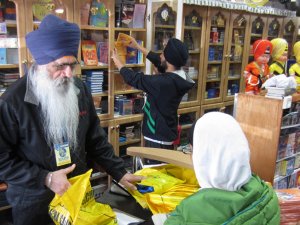Teaching & Learning
Human existence and human progress depend on generational progress. So, how do we teach new generations? No matter whether we are trying to teach basket weaving or nuclear science, first we need to repeat and emphasize the core of human knowledge on the topic to the new generation such that they easily master the core information and quickly push the borders in a systematic manner. The best, most convenient and accurate model would allow us to transfer within us the existing information base methodically and systematically and be able to draw upon it as needed.
Forget not that the information base increases at a phenomenal rate with no end in sight. The human capacity to absorb the possible information is surely limited. But human imagination apparently expands its capacity not by more gray matter but by technologically marvelous ways to expand magically its capacity without expanding more gray matter.
Clearly, one strategy seems obvious. The goal would be better and faster served if every generation could lean on better and faster teaching technology. That would be great but wouldn’t it be better yet if every year the teachers did not have to reinvent new teaching language and technology? Such repetition slows the expensive and slow the process.
In order to create a progressive model of teaching and learning wouldn’t it be sensible if we can teach progressively but in the language of the student? Wouldn’t this be the best and most efficient way as long as the vocabulary and complexities of the language can handle the load and its transfer.
What is a new language? How is a new language born?
I love languages but, for sure, I am no linguist. My repertoire of languages being grossly somewhat limited.
A few of us get into origin and structure of specific languages that address issues important to mankind like whether some languages are sacred or perhaps not, and if some languages are demonstrably older than others.
For instance, Gurbani, the language of Sikh spiritual message, whether sung or recited as prose in the Sikh religious literature, pertains to poetical rendering – words that hint at a different language or sub-version or modification of established languages of a people. Often, the original languages are Sanskrit, Arabic, Farsi, Persian and/or Punjabi. Sometimes hybrid mixtures of these and other languages ply their magic. It would be like parsing a document in a wonderful mix of Latin or Greek, modified with a little German, Italian with overlapping tastes of some French, a little English etc. Anglicized or Lingua Franca, for instance.
What Is A New Language?
The basic question: What is the beginning of a language? Is it when we learn to creatively argue, abuse or hurl words as missiles? When is a language born? Mind you, the world has many.
Look at a new born infant when all he or she can do is to mutter sounds, not that they necessarily make any sense. In my view, the primal scream of a new born is a sound that announces, “Here I am.” It is not a word or an impressive statement in any language but it is a supremely important and unique pronouncement.
How much grammar do you need to know at a minimum of any language then? To experience it I would suggest that you just sit in a conference between a mother and her new born child. The event is loaded with importance and significance. There is exchange of sentiments, ideas and meaning, in spite of the very primitive use of any language. Thinking thus, how should we then classify some languages as new at birth, while other rate as old as the hills?
I am sure many readers will immediately dismiss my assertion counting newborns as being founders of new religions and languages. But stay with me awhile and don’t be in a rush to point out some old prophet’s name. Every new language has promises to keep and miles to go before we sleep.
Never underestimate what comes out the mouths of babes, as I said.
What am I hinting at is that every newborn is the parent (inventor) of a new language that is at the same time almost unique as well? But to transfer it to become useful we need to evolve it further.
So, when we hit on an old language that seems to have a broken down, largely confusing structure today, it may be representing an incomplete or somewhat primitive skeleton of a structure, and at one point the leftovers of a comprehensive structure of a language that does not quite exist anymore.
In my view the beginning of language is speech – not necessarily or always in any particular human language with its vocabulary and grammar intact. A simple word such as “Hello” is an example.
And yet, scientists incessantly argue about the precise date when a particular language was invented, born or appeared. Many of these primitive languages appear, become the dominant medium for human exchange and human expression, become mixed with other languages and become superbly rich and complex means of human trade, exchange and remain a magically complex system of human communication, while humans argue and fight over who is richer than the others. Remember also that when we teach the rudiments or complexities of a language to the next generation, we teach existing vocabulary in common usage along with some limited additions to accommodate necessary current modifications. The language in common usage is what we lean on and it is best labeled as norma loquendi, literally, the language of the common people. On the other hand, to me it is obvious that to argue that in a particular year a specific particular language was invented by a particular genius is a bit of overarching hyperbole.
Creating a language takes more than a lifetime. Yes, one thing continues. No matter when a particular language assembled a particular working system some changes continue to occur. In fact, Punjabi today is much more extensive than was put together by the Gurus in their lifetimes.
Look, for instance how have languages like English, French, even Urdu and Punjabi continued their growth, while old respectable languages like Sanskrit and Latin diminished significantly. A language that is structurally frozen in time is a language on its way to its death.
And that’s my limited and growing but biased wisdom about what constitutes human speech.





